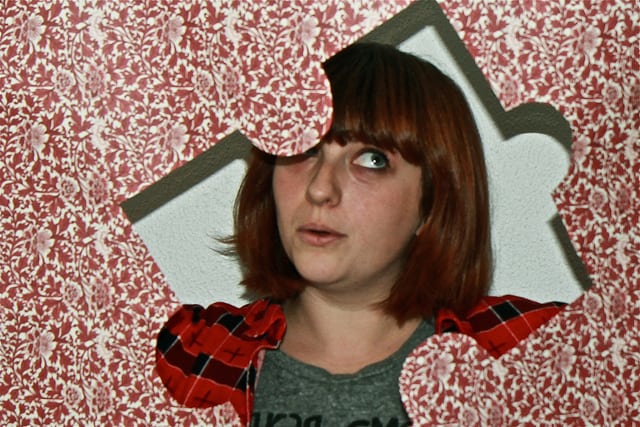Short messages on Disability from Respect Yourself, the guidance site for young people to help make good decisions in life.

Helping a friend by Rebecca Osborne
The social model of disability seeks to change society in order to accommodate people living with impairment; it does not seek to change persons with impairment to accommodate society. People with disability have a right to be fully participating citizens on an equal basis with others.
(more…)

Helping a friend by Rebecca Osborne
The social model of disability looks at ways of removing barriers that restrict life choices for disabled people. When barriers are removed, disabled people can be independent and equal in society, with choice and control over their own lives.
(more…)

Craftivists involved by craftivist collective
The social model of disability says that disability is caused by society’s failure to accommodate and accept a certain variation, rather than by a person’s impairment or difference.
(more…)

"Emotions3" by allyaubry☆ - http://www.flickr.com/photos/allyaubryphotography/2535453766/lightbox/. Licensed under CC BY 2.0 via Wikimedia Commons - http://commons.wikimedia.org/wiki/File:Emotions3.jpg#mediaviewer/File:Emotions3.jpg
While there is no ‘cure’ for autism, there are some approaches that people use to help with various difficulties they may experience. Strategies can be viewed on the National Autistic Society website.
(more…)

"Emotions3" by allyaubry☆ - http://www.flickr.com/photos/allyaubryphotography/2535453766/lightbox/. Licensed under CC BY 2.0 via Wikimedia Commons - http://commons.wikimedia.org/wiki/File:Emotions3.jpg#mediaviewer/File:Emotions3.jpg
For people with an autistic spectrum disorder, ‘body language’ can appear just as foreign as if people were speaking ancient Greek.
(more…)

"Emotions3" by allyaubry☆ - http://www.flickr.com/photos/allyaubryphotography/2535453766/lightbox/. Licensed under CC BY 2.0 via Wikimedia Commons - http://commons.wikimedia.org/wiki/File:Emotions3.jpg#mediaviewer/File:Emotions3.jpg
Many people with autism find it difficult to understand facial expressions, tone of voice, jokes and sarcasm – often interpreting language very literally.
(more…)

"Emotions3" by allyaubry☆ - http://www.flickr.com/photos/allyaubryphotography/2535453766/lightbox/. Licensed under CC BY 2.0 via Wikimedia Commons - http://commons.wikimedia.org/wiki/File:Emotions3.jpg#mediaviewer/File:Emotions3.jpg
Some people with autism may wonder why they are ‘different’ when they notice that other people appear to intuitively know how to communicate & interact with each other.
(more…)

"Emotions3" by allyaubry☆ - http://www.flickr.com/photos/allyaubryphotography/2535453766/lightbox/. Licensed under CC BY 2.0 via Wikimedia Commons - http://commons.wikimedia.org/wiki/File:Emotions3.jpg#mediaviewer/File:Emotions3.jpg
People with autism often have difficulty relating to, recognising and understanding other people’s emotions and feelings, and expressing their own, which can make it more difficult for them to fit in socially.
(more…)

"Emotions3" by allyaubry☆ - http://www.flickr.com/photos/allyaubryphotography/2535453766/lightbox/. Licensed under CC BY 2.0 via Wikimedia Commons - http://commons.wikimedia.org/wiki/File:Emotions3.jpg#mediaviewer/File:Emotions3.jpg
Along with the social difficulties, other characteristics of autism vary from one person to another and often include: love of routines, sensory sensitivity, special interests, and learning disabilities.
(more…)

"Emotions3" by allyaubry☆ - http://www.flickr.com/photos/allyaubryphotography/2535453766/lightbox/. Licensed under CC BY 2.0 via Wikimedia Commons - http://commons.wikimedia.org/wiki/File:Emotions3.jpg#mediaviewer/File:Emotions3.jpg
Many of the social problems with autism are because the person is trying to make sense of a society governed by largely implied, infinitely fluctuating rules.
(more…)



